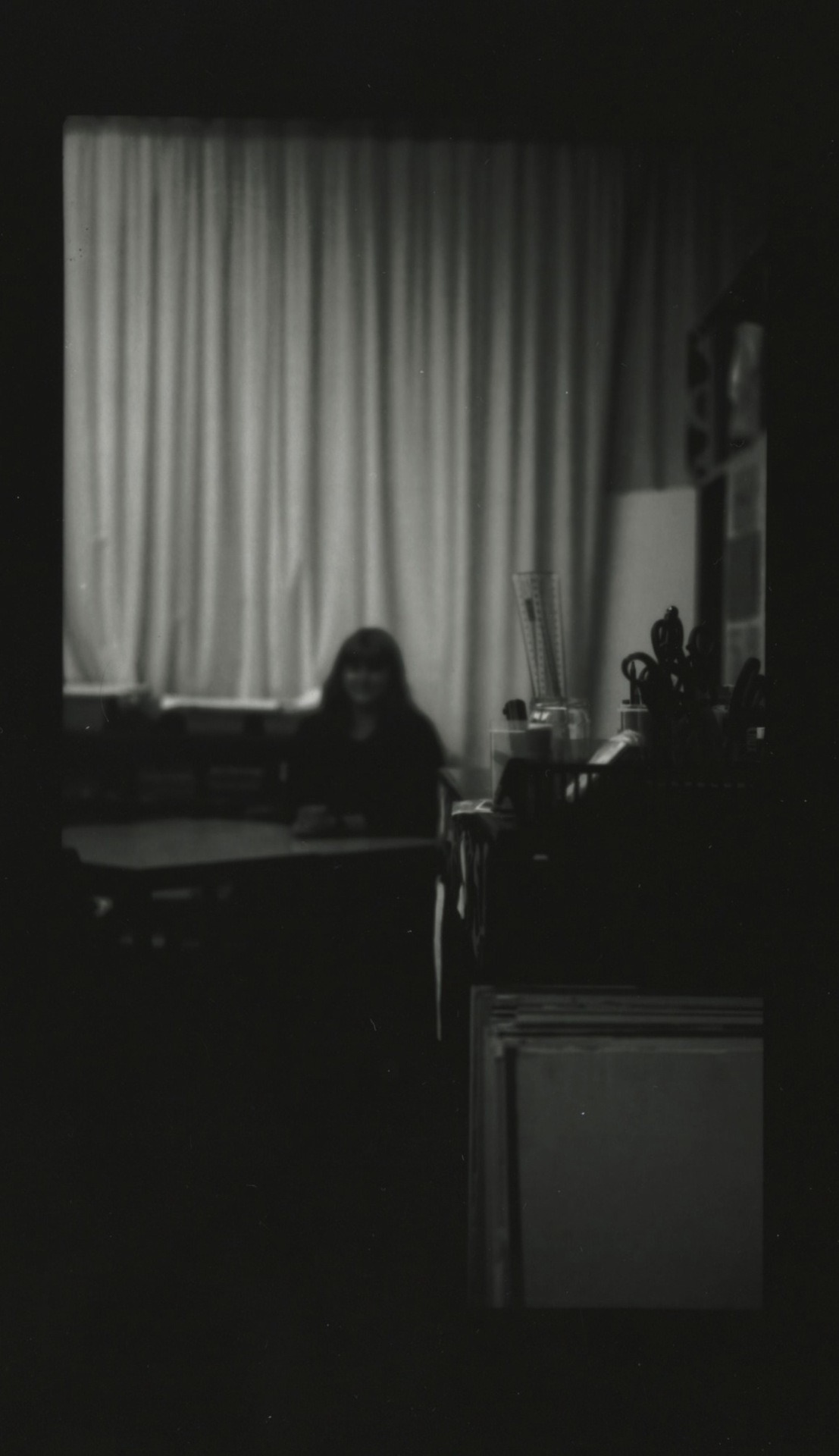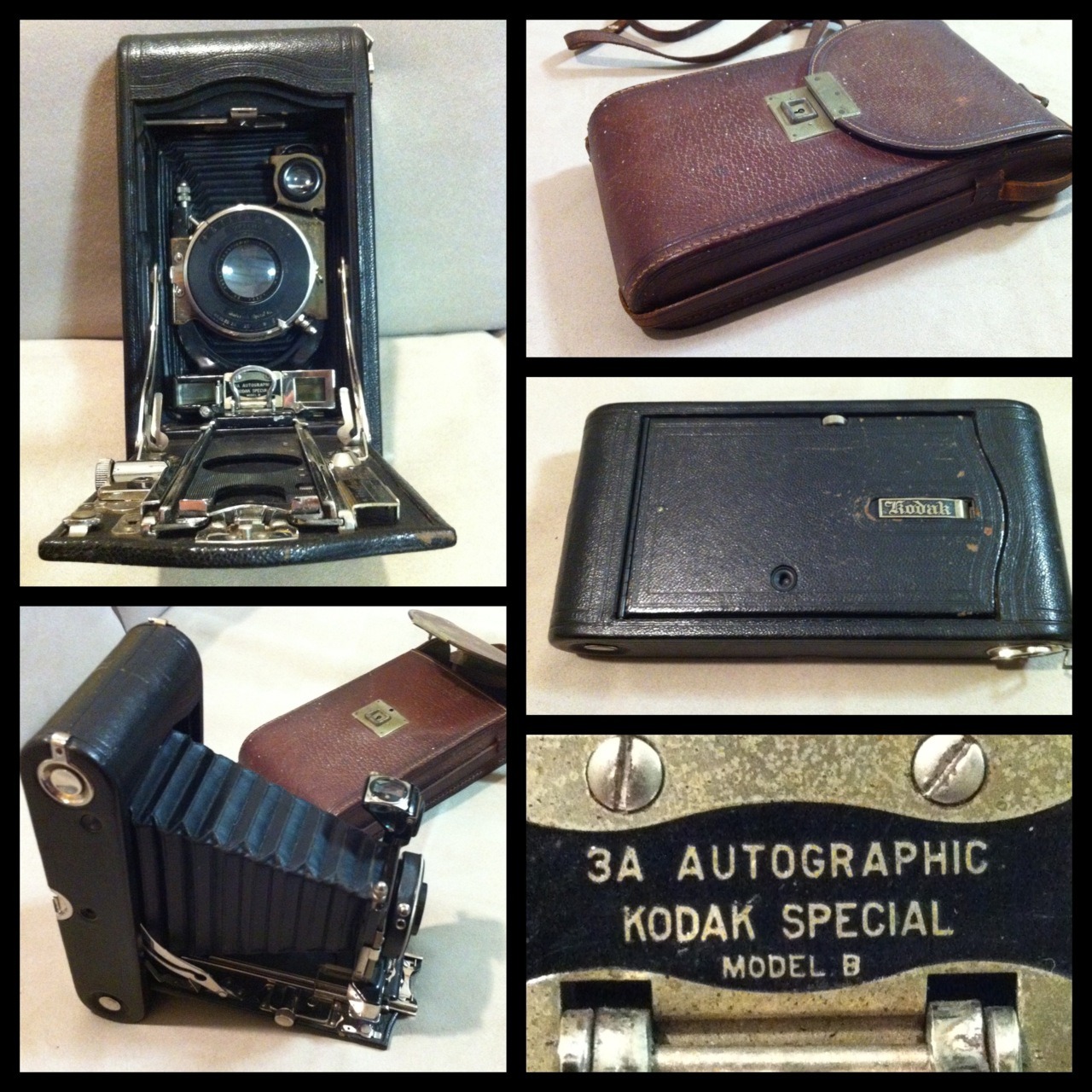

Selwyn College’s Community Education courses include “Photography and the Darkroom”, so I’ve spent the last five Monday nights there making picture magic.
This week, I took along the 3A Autographic Kodak Special. I’ve worked out how the camera functions, and that the shutter speed and aperture settings do seem to work (though I haven’t measured precisely).
My teacher and I took some pictures with photo sensitive paper which I cut down to size and taped inside the camera in the darkroom. Using the rangefinder, we took a stab at focus, and took a 5 second exposure at f6.3 (I think)… Nothing. Doubling the exposure time yielded results, the negative image above is what comes out of the camera when the paper is developed.
Then, by using the negative for a contact print we get the positive. “In person” the scissors and ruler on the table are super sharp, I was delighted.

